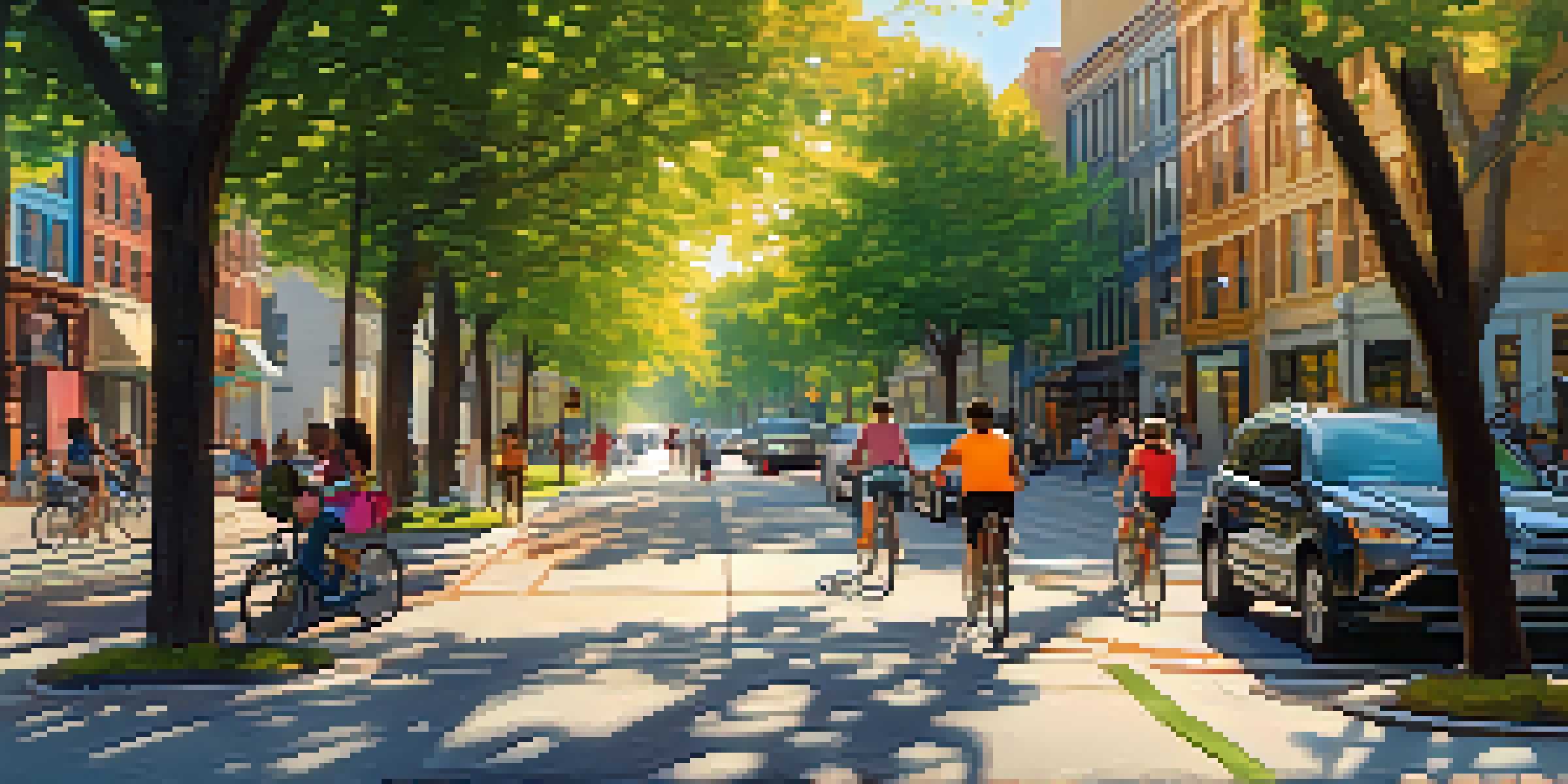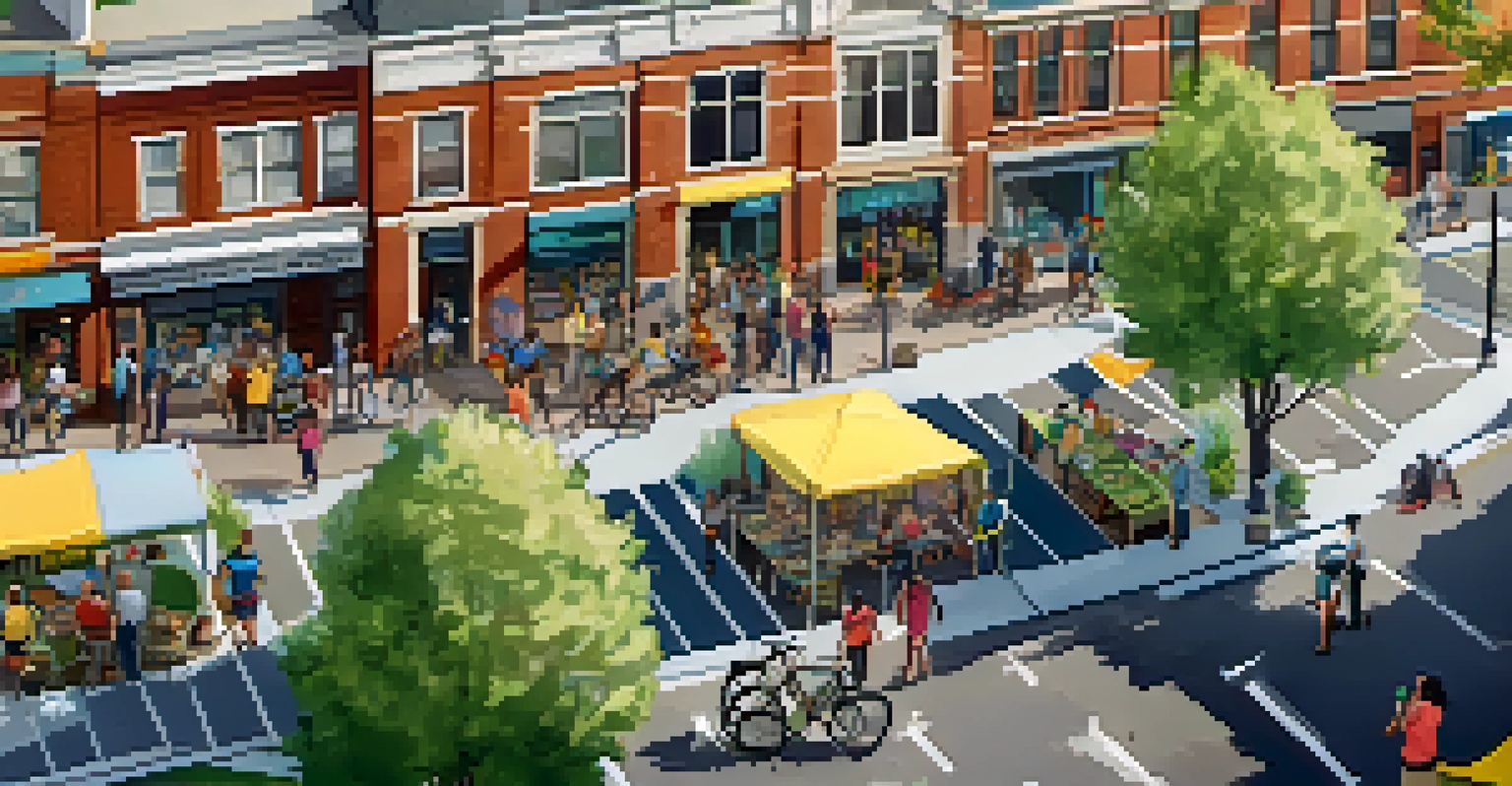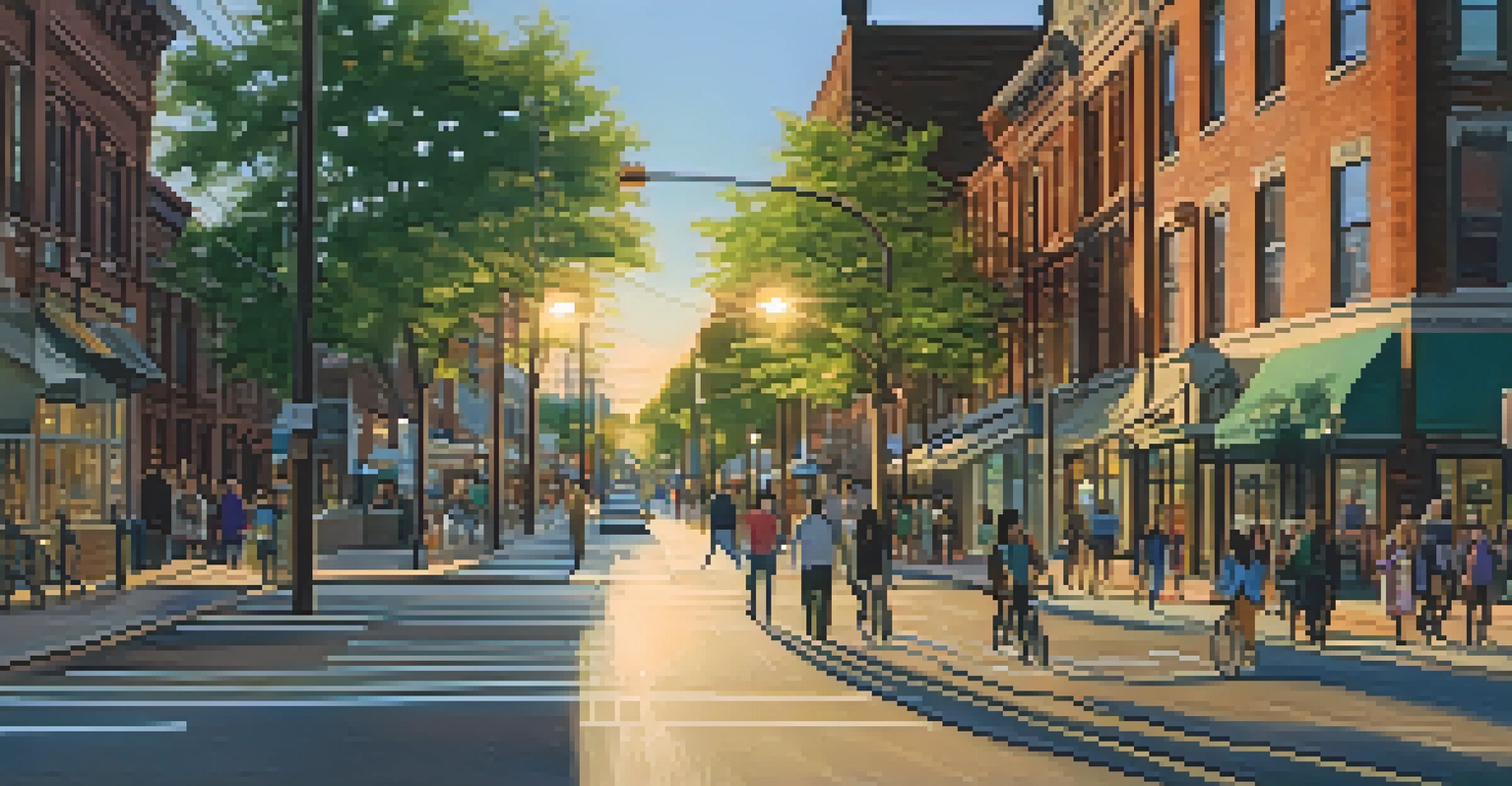Bicycle and Pedestrian Infrastructure in Newark: A Study

The Importance of Bicycle and Pedestrian Infrastructure
Bicycle and pedestrian infrastructure plays a crucial role in urban planning, promoting safe and accessible ways for people to navigate cities. In Newark, this aspect has gained attention as a means to enhance mobility and reduce reliance on cars. By investing in these infrastructures, cities can foster healthier lifestyles and reduce environmental impact.
A city is not a city without a vibrant public space that encourages walking and biking.
Moreover, effective infrastructure encourages more residents to bike or walk, which can lead to decreased traffic congestion and lower emissions. In an era where sustainability is paramount, cities like Newark are recognizing that improving these pathways is not just beneficial—it's essential. A seamless network of bike lanes and sidewalks creates safer environments and promotes community interaction.
Ultimately, the focus on bicycle and pedestrian infrastructure reflects a broader commitment to equity and inclusivity in urban design. Everyone should have access to safe and reliable means of transportation, regardless of their socio-economic status. As Newark continues to evolve, these investments can lead to a more connected and vibrant city.
Current State of Biking and Walking in Newark
Newark's current biking and walking infrastructure presents both opportunities and challenges. While some areas have seen improvements, others still lack adequate facilities, creating a patchwork of accessibility. The city's layout, with its mix of urban and suburban characteristics, requires tailored solutions to meet the diverse needs of its residents.

Some neighborhoods boast newly constructed bike lanes and pedestrian-friendly crossings, enhancing safety and convenience. However, many cyclists still face dangers from heavy traffic and insufficient signage. This disparity highlights the need for a comprehensive approach to ensure that all areas receive the attention they deserve.
Investing in Urban Mobility
Newark's focus on bicycle and pedestrian infrastructure is essential for enhancing mobility, reducing car reliance, and fostering healthier lifestyles.
Community feedback is essential in assessing the effectiveness of existing infrastructure. Local organizations and residents often share their experiences, shedding light on what works and what doesn’t. By listening to their voices, Newark can develop a more effective framework that addresses the unique challenges faced by its communities.
Recent Initiatives to Enhance Infrastructure
In recent years, Newark has launched various initiatives aimed at improving its bicycle and pedestrian infrastructure. Programs such as 'Bike Newark' have introduced bike-sharing systems, making it easier for people to access bicycles without the need for ownership. This initiative not only promotes cycling but also integrates seamlessly with public transportation, enhancing overall mobility in the city.
The bicycle is a simple solution to some of the world's most complicated problems.
Moreover, the city has been proactive in redesigning streets to prioritize pedestrian safety. Wider sidewalks, improved crosswalks, and better lighting are just a few changes that have been implemented. These enhancements aim to create a more inviting environment for pedestrians, encouraging walking as a primary mode of transportation.
Partnerships with local organizations have also played a significant role in these initiatives. Collaborative efforts often result in community-driven projects that reflect the needs and desires of residents. By working together, Newark is making strides toward a more bike- and pedestrian-friendly landscape.
Community Engagement and Feedback
Community engagement is vital for the success of any urban infrastructure project. In Newark, local residents and advocacy groups have been instrumental in voicing their thoughts on biking and walking conditions. Regular town hall meetings, surveys, and workshops allow citizens to share their experiences and propose improvements.
This feedback loop not only empowers residents but also helps city planners understand the real-world implications of infrastructure changes. For example, input from cyclists can lead to safer bike lanes, while pedestrian feedback can improve sidewalk designs. By prioritizing community voices, Newark can create solutions that genuinely reflect the needs of its citizens.
Community Involvement Matters
Active community engagement is crucial for creating effective infrastructure that reflects the needs and desires of Newark's residents.
Moreover, successful community engagement fosters a sense of ownership among residents. When people feel that their opinions matter, they are more likely to utilize and maintain the newly developed infrastructures. This collaborative spirit is essential for building a resilient and sustainable urban environment.
Challenges Facing Newark's Infrastructure Development
Despite the positive strides Newark has made, challenges persist in the development of its bicycle and pedestrian infrastructure. Funding remains a significant hurdle, as many projects require substantial financial investment. Competing priorities within the city budget can often lead to delays in implementing necessary improvements.
Additionally, the existing road networks and traffic patterns can complicate the introduction of new bike lanes and pedestrian pathways. Retrofitting old streets to accommodate these changes requires careful planning and execution. Without a comprehensive strategy, certain neighborhoods may continue to lag behind.
Public perception can also pose a challenge. Some residents may be resistant to changes that prioritize cyclists and pedestrians over vehicle traffic. Addressing these concerns through education and outreach is crucial to garnering support for infrastructure initiatives.
Benefits of Improved Infrastructure for Residents
The benefits of improved bicycle and pedestrian infrastructure extend far beyond convenience; they encompass health, economic, and environmental advantages. With more safe pathways, residents are likely to engage in physical activity, reducing obesity rates and enhancing overall community health. This shift toward active transportation fosters a culture of wellness in Newark.
Economically, enhanced infrastructure can boost local businesses by increasing foot traffic and accessibility. When people can safely walk or bike to shops and restaurants, it encourages spending within the community. This creates a vibrant local economy and strengthens community ties.
Sustainable Future Ahead
Improving biking and walking infrastructure not only promotes a healthier environment but also supports economic growth and community well-being.
Finally, investing in sustainable transportation options contributes to a cleaner environment. Fewer cars on the road lead to lower greenhouse gas emissions, improving air quality for everyone. As Newark continues to prioritize these infrastructure improvements, it's paving the way for a healthier, more sustainable future.
Future Prospects for Newark's Infrastructure
Looking ahead, the future of bicycle and pedestrian infrastructure in Newark appears promising. With ongoing investments and community support, there is potential for significant growth and improvement. Future plans may include expanding existing bike lanes, creating dedicated pedestrian zones, and enhancing public transit connections.
Furthermore, as climate change becomes a more pressing issue, cities worldwide are recognizing the importance of sustainable transportation. Newark can lead by example, showcasing how effective infrastructure can combat environmental challenges while improving quality of life. This proactive approach can also attract new residents and businesses to the area, fostering economic growth.

Ultimately, the commitment to enhancing bicycle and pedestrian infrastructure reflects a broader vision for a more inclusive, healthy, and sustainable city. By prioritizing these initiatives, Newark is not only improving transportation options but also building a stronger sense of community for all its residents.